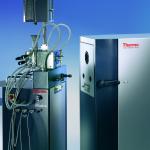Polymer manufacture today is one of the most important world-wide industrial sectors and, significantly, is not confined in the centre of manufacture to one or two highly industrialised nations only. In contrast, a large number of diverse nations have resources, which are based on a variety of raw materials, including rubber, crude oil, and recycled materials. Associated with this, many countries also have a large capacity for polymer production. Clearly an industry such as this can not easily be summarised and no two polymers are produced under exactly the same processing conditions.
Often many thousands of tonnes of product can be wasted by poor or inappropriate set-up of process equipment, in particular when novel products are being produced for the first time. Good research and development and quality control requires that the material being manufactured meet often quite stringent criteria, and that processing conditions be optimised for that material. This can be achieved through good materials characterisation techniques and through sensible pilot scale testing before full production commences.
Material characteristics, which play a crucial role in polymer processing are often rheological – such as viscoelasticity, viscosity etc and dictate how the molten polymer will flow and deform in response to forces exerted by the screw, at the die, in the mould, during and after cure etc. These properties can be measured using a controlled stress rheometer with high temperature capability. They help the manufacturer predict the propensity for the final product to exhibit surface defects (especially at high throughputs), as well as giving indications of the optimal conditions for Compatibilisation etc. Other rheology-based techniques such as MFI, MVI etc have long been in use, but have often been shown to be weak with respect to the quantity and quality of the data they provide. The power and ease of collection of information provided by a rheometer far increases the capacity of the engineer, either as a tool for QC, R&D or for assessing the possibilities directly during production.
Recent advances in extrusion technologies have allowed ever smaller units to be constructed for small scale production as well as for R&D. These small units allow an engineer to assess the possibilities for production of a new polymer product by altering process variables, like barrel and die temperature profile, or screw speed and collecting the resulting product. Later analysis of these products can tell the engineer whether or not a sample is likely to meet specifications when produced on a larger scale. Torque sensors on the screws of small-scale extruders give an idea of the relative processability of 12 different mixtures. These extruders have sufficient instrumentation (temperature, torque, screw speed) and flexibility (multiple temperature zones, screw speed, segmentation of screws for alteration of different zones within the machine, and alternate die geometries) to allow the user to truly research and evaluate different scenarios. This flexibility, combined with the extensive postex take-off systems also allows these machines to be used for production on a small scale, often for low volume, high value products, or when several small batches of different products are required.
Combining laboratory- and pilot-scale instrumented machines and post-ex options with high grade rheological measurements for research and quality control provides a good opportunity for engineers and scientists to take full advantage of the increasing trend for specialised polymeric products. As other technologies mature further and, for example, lighter, stronger more flexible polymers are required to replace current generation materials, the need for good (and relevant) materials characterisation and process optimisation, as well as small scale, niche production of novel or improved polymers will grow. The combination of rheometry and small-scale extrusion equipment is certainly playing, and will certainly play, a big part in these developments
A full copy of this paper is available on request by quoting Rheo054

